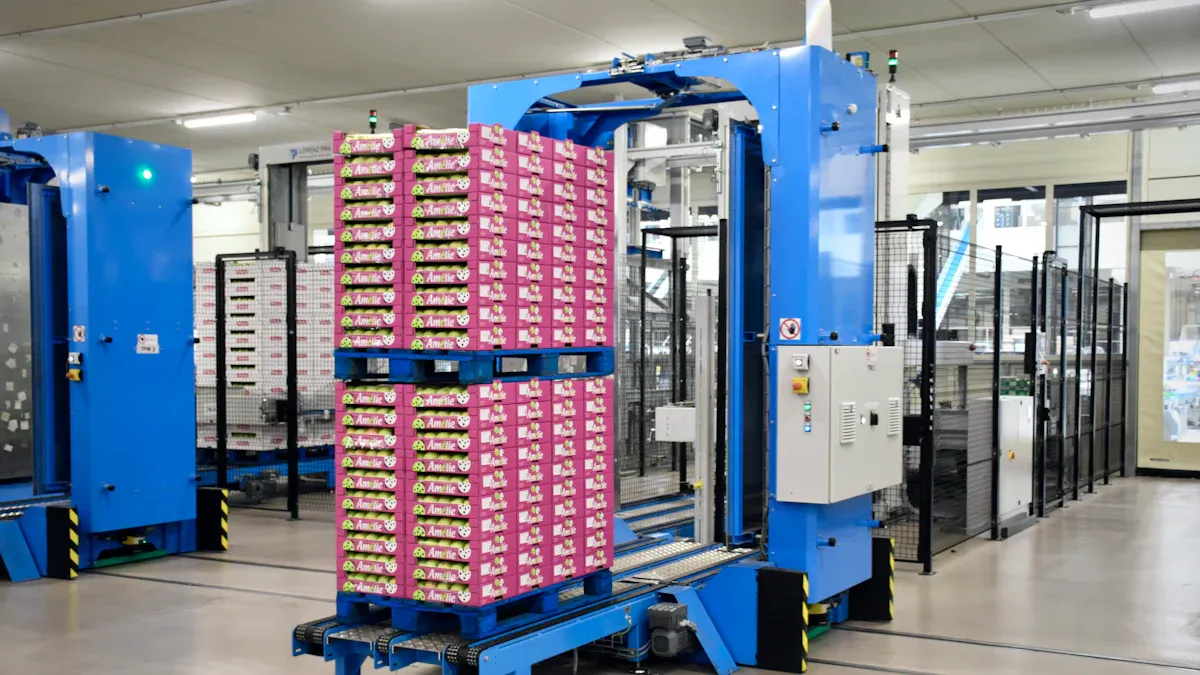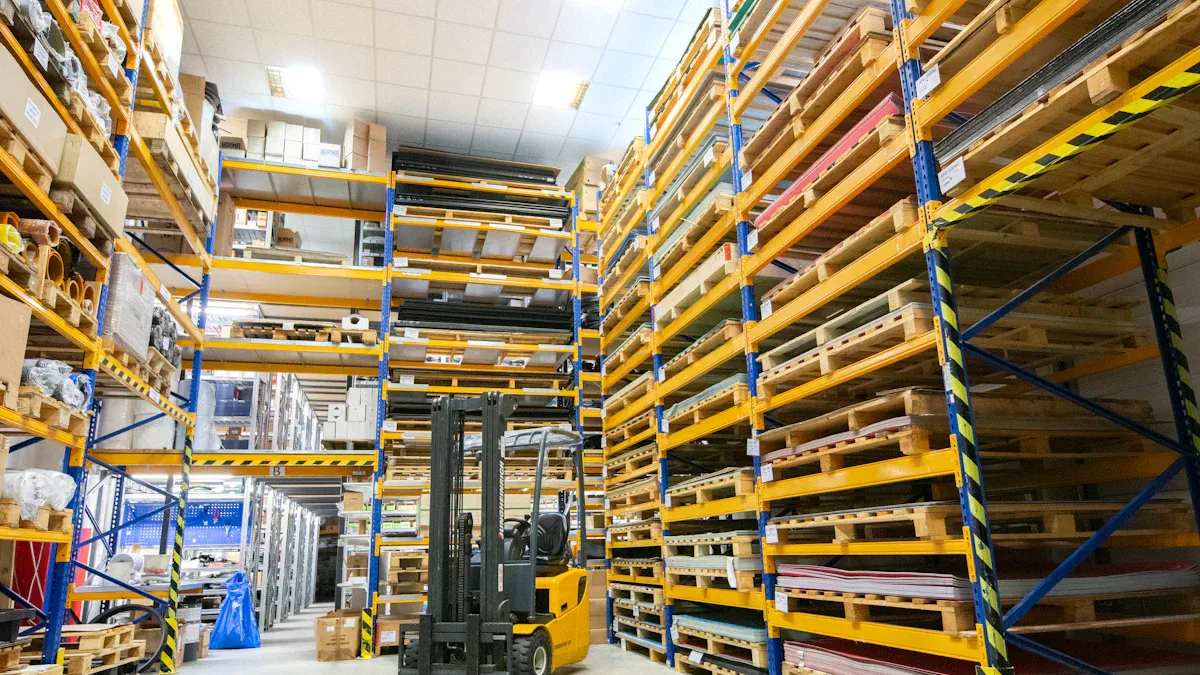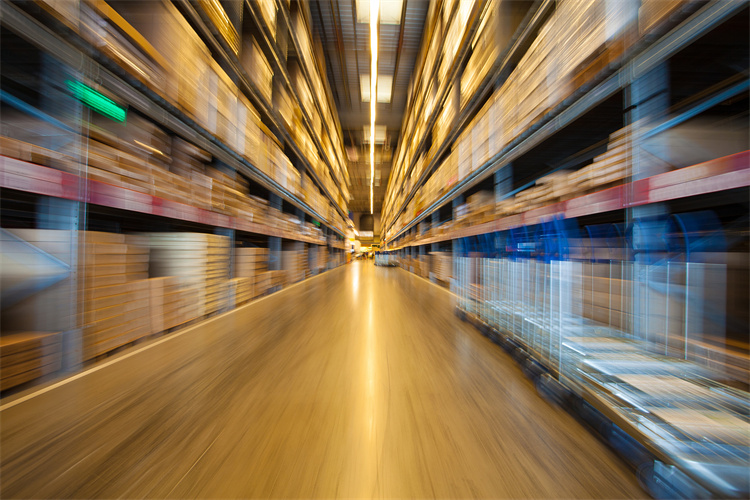What Are Automated Storage and Retrieval Systems and How Do They Work

Automated Storage and Retrieval Systems use technology to move and store products in warehouses. These systems operate with computers that control machines for placing and picking items. Companies use them to improve speed and reduce mistakes. Many businesses see better accuracy and less wasted space with these systems.
Automation helps workers focus on important tasks and keeps inventory organized.
Key Takeaways
Automated Storage and Retrieval Systems use machines and software to store and move products quickly and accurately.
These systems save space by stacking items efficiently and reduce mistakes by following set paths and using sensors.
Different types of ASRS handle various product sizes, from large pallets to small boxes, fitting many industries’ needs.
Automation helps workers focus on important tasks, improves safety, and speeds up warehouse operations.
Companies using ASRS enjoy better inventory control, faster order picking, and more organized storage areas.
Automated Storage and Retrieval Systems

What Is ASRS
Automated Storage and Retrieval Systems use machines and computers to move products in and out of storage. These systems rely on fixed-path machines, such as cranes that travel on rails between racks. The machines pick up items and place them in specific locations without help from workers. Each system includes racks, cranes, aisles, and points where items enter or leave the storage area. Control software tells the machines where to go and what to do. Experts describe these systems as a way to automate the storage and retrieval of loads, making the process faster and more reliable.
ASRS can handle many types of products, from small boxes to large pallets. The machines follow set paths, which helps prevent mistakes and keeps everything organized.
Main Purpose
The main purpose of Automated Storage and Retrieval Systems is to make storing and picking items easier and more accurate. Companies use these systems to save space and reduce labor costs. ASRS help businesses keep track of inventory and lower the chance of errors. Most companies install these systems in warehouses, distribution centers, and factories. These places need to move products quickly and store them safely. By using ASRS, businesses can improve reliability and make better use of their storage space.
Environment | Common Use of ASRS |
|---|---|
Warehouses | Storing and picking products |
Distribution Centers | Moving goods for shipping |
Manufacturing Facilities | Handling parts and finished goods |
Automated Storage and Retrieval Systems work best in places where speed, accuracy, and space matter most. They help companies meet customer demands and keep operations running smoothly.
Operation
Storage Process
Automated Storage and Retrieval Systems use machines to place items in storage. The process starts when a worker or conveyor brings a product to the system’s entry point. A sensor checks the item’s size and weight. The control software then finds an empty spot in the storage racks.
A robotic crane or shuttle moves along a track to pick up the item. The machine lifts the product and carries it to the chosen location. The system places the item on a shelf or in a bin. The control software records the item’s position in the database. This step-by-step process keeps products organized and easy to find later.
Tip: Sensors and software help prevent mistakes during storage, making sure each item goes to the right place.
Retrieval Process
Retrieving items from Automated Storage and Retrieval Systems follows a clear path. When someone requests a product, the control software locates the item in the storage racks. The system sends instructions to the crane or shuttle.
The machine travels to the correct spot, lifts the item, and brings it back to the exit point. Conveyors or workers then take the product to shipping or the next work area. This process reduces search time and helps workers get the right items quickly.
Engineering studies use special computer models to measure how well these systems work. They look at how long it takes to get each item and how much energy the machines use. By breaking down each movement—like moving up, down, or sideways—engineers can find ways to make the system faster and save energy. These studies help companies choose the best way to run their warehouses.
Automation Technology
Automation technology makes these systems work smoothly. Robotic cranes and shuttles move along tracks between storage racks. Conveyors carry items to and from the system. Sensors check each product’s size and weight.
Control software acts as the brain of the system. It tells machines where to go and what to do. The software tracks every item and updates the inventory in real time. This technology helps companies move products quickly and accurately.
Note: Automation reduces mistakes and helps workers focus on other important jobs.
Components
Storage Structures
Storage structures form the backbone of any automated system. These structures include racks, shelves, and bins. Each rack holds products in organized rows and columns. Some systems use tall racks that reach the ceiling. Others use compact shelves for small items. The design depends on the size and type of products. Strong materials like steel make the racks safe and stable.
Tip: Well-designed storage structures help save space and keep products easy to find.
Retrieval Equipment
Retrieval equipment moves products in and out of storage. Common machines include cranes, shuttles, and robotic arms. Cranes travel along rails between racks. Shuttles move quickly on tracks to pick up or deliver items. Robotic arms can grab and place products with care. Each machine follows commands from the control system.
Cranes: Lift and move heavy loads.
Shuttles: Carry small bins or boxes.
Robotic arms: Handle delicate or odd-shaped items.
These machines work together to speed up the storage and retrieval process.
Control Systems
Control systems act as the brain of the operation. Special software tracks every product and tells machines what to do. Sensors check the size and weight of each item. The system updates inventory in real time. Operators use computers or touchscreens to manage the system.
Component | Function |
|---|---|
Software | Directs machines and tracks items |
Sensors | Check product details |
User Interface | Lets workers control the system |
Automated Storage and Retrieval Systems rely on these three main components to work smoothly and efficiently.
Types of Automated Storage and Retrieval Systems

Unit Load
Unit load systems handle large and heavy items, such as pallets or big containers. These systems use cranes or shuttles to move products to and from storage racks. Unit load ASRS work best in warehouses that store bulk goods or need to move heavy loads quickly. The machines can lift thousands of pounds at once. Companies often choose unit load systems for industries like manufacturing, food, and beverage. These systems help reduce manual labor and improve safety.
Mini-Load
Mini-load systems store and retrieve smaller items, such as boxes, totes, or bins. They use smaller cranes or shuttles that move quickly between racks. Mini-load ASRS fit well in places that need to pick many small orders, like e-commerce or electronics warehouses. These systems save space by stacking items close together. Mini-load systems also help workers pick orders faster and with fewer mistakes.
Carousel
Carousel systems use rotating shelves or bins to bring items directly to the operator. There are two main types: horizontal and vertical carousels. Horizontal carousels spin shelves around a track, while vertical carousels move bins up and down. Carousels work well for storing small parts or items that need frequent picking. Operators stand in one place while the system delivers products to them. This setup reduces walking and speeds up order picking.
Robotic Cube Storage
Robotic cube storage systems use robots to move bins stacked in a grid or cube-shaped structure. The robots travel on top of the grid and pick up bins from below. This design uses vertical space and fits many items in a small area. Companies can add more robots or bins as their needs grow. These systems work well for e-commerce, pharmaceuticals, and small parts storage.
Note: Robotic cube storage systems use a smart strategy called product bundling. The system groups popular items together, which helps robots work faster and travel less. Studies show this method can improve robot movement efficiency by up to 40%. Companies can use these systems in warehouses of different sizes and layouts.
ASRS Type | Key Criteria & Evidence |
|---|---|
Cube-Based Systems | |
Movable Rack AMRs | Flexible, scalable, lower density, slower in dense areas, low cost, quick ROI, good for large goods |
Autonomous Case-Handling Robots | High-speed case handling, moderate cost, works with conveyors, precise handling |
Aisle-Based Robotic Shuttles | Combines aisles with robots, speed/scalability limited by aisles, needs infrastructure changes |
Benefits and Applications
Efficiency and Accuracy
Automated Storage and Retrieval Systems help companies work faster and make fewer mistakes. These systems use machines and smart software to pick, pack, and sort products. Many warehouses now use robots and automation to keep up with business needs. Companies see better results when they use these systems because they can:
Speed up order picking and packing
Reduce human errors in sorting and tracking
Adapt to changes in order size or product type
Handle more work with fewer workers
Modern warehouses often connect these systems with advanced software and smart devices. This setup lets managers see real-time data and make better decisions. Some companies use artificial intelligence to predict when machines need repairs. This planning helps avoid delays and keeps everything running smoothly. Many businesses now design their warehouses to grow and change easily, so they can add more machines when needed. The move toward "darker warehouses," where robots do most of the work, shows how much companies value speed and accuracy.
Tip: Automation also helps companies save energy and work in a more sustainable way.
Space Utilization
Automated Storage and Retrieval Systems use space in smart ways. These systems stack products high and close together, which saves floor space. Companies can store more items in the same area. Some systems use tall racks that reach the ceiling, while others use compact bins for small parts. This design helps businesses fit more products without building bigger warehouses.
A well-planned system also makes it easier to find and move items. Workers spend less time walking or searching for products. This setup keeps the warehouse neat and organized.
Industry Uses
Many industries use Automated Storage and Retrieval Systems to improve their operations. Some common examples include:
Retail and e-commerce companies use these systems to fill online orders quickly.
Food and beverage companies store heavy pallets and keep products safe.
Pharmaceutical companies need accurate tracking for medicine and supplies.
Automotive factories handle many small parts and large components.
Electronics warehouses pick and pack small, delicate items.
These systems help each industry meet customer demands and follow safety rules. Companies choose the right system based on their products and business goals.
Automated Storage and Retrieval Systems help companies organize products and move them quickly. These systems use machines and software to boost accuracy and save space. Many industries rely on ASRS to meet customer needs and improve safety. Companies that use these systems often see faster work and fewer mistakes. Readers can see how ASRS shape modern warehouses and make business operations stronger.
FAQ
What types of products can Automated Storage and Retrieval Systems handle?
Automated Storage and Retrieval Systems can move many types of products. They work with small boxes, large pallets, bins, and even delicate items. The system design depends on the size and weight of the products.
How do Automated Storage and Retrieval Systems improve warehouse safety?
These systems reduce the need for workers to lift heavy items or climb racks. Machines handle most movements. This setup lowers the risk of accidents and injuries in the warehouse.
Can Automated Storage and Retrieval Systems fit in small spaces?
Yes, companies can install Automated Storage and Retrieval Systems in both large and small warehouses. The systems use vertical space and compact racks. This design helps businesses store more items without needing extra floor space.
How does the control software track inventory?
The control software records each item’s location when stored or retrieved. It updates the inventory in real time. Workers can check stock levels and find products quickly using the system.
Are Automated Storage and Retrieval Systems hard to maintain?
Most systems need regular checks and cleaning. Many companies use sensors and software to spot problems early. This approach keeps the machines running smoothly and reduces downtime.
See Also
How Robotic Automation Transforms Warehouse Efficiency Today
Advantages Of Advanced Automation In Modern Manufacturing Warehouses
Key Reasons Warehouse Automation Is Vital For Business Success
Boosting Warehouse Output Through Innovative Logistics Robotics
Unveiling JUSDA’s Advanced Logistics Solutions For Manufacturing
